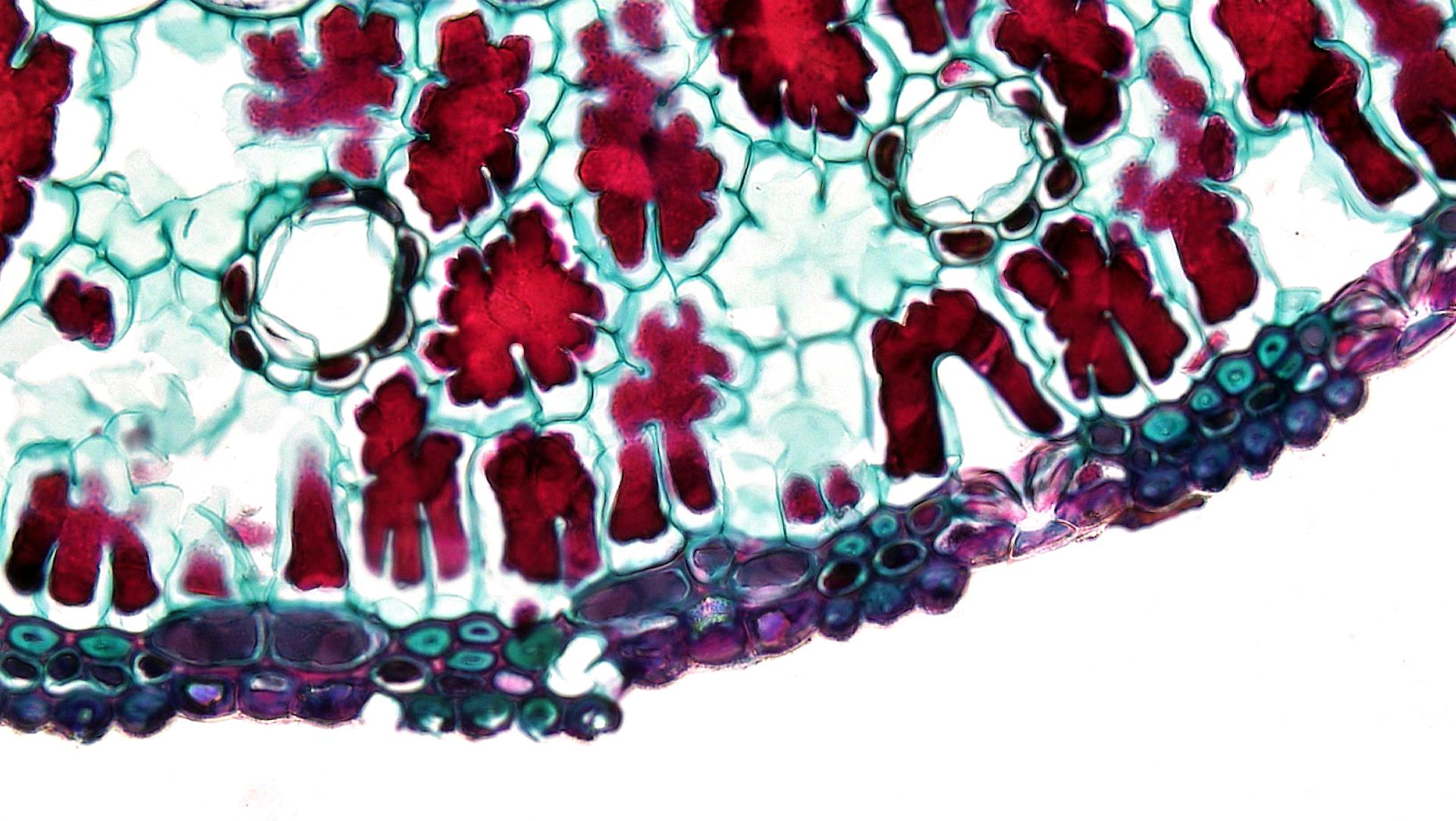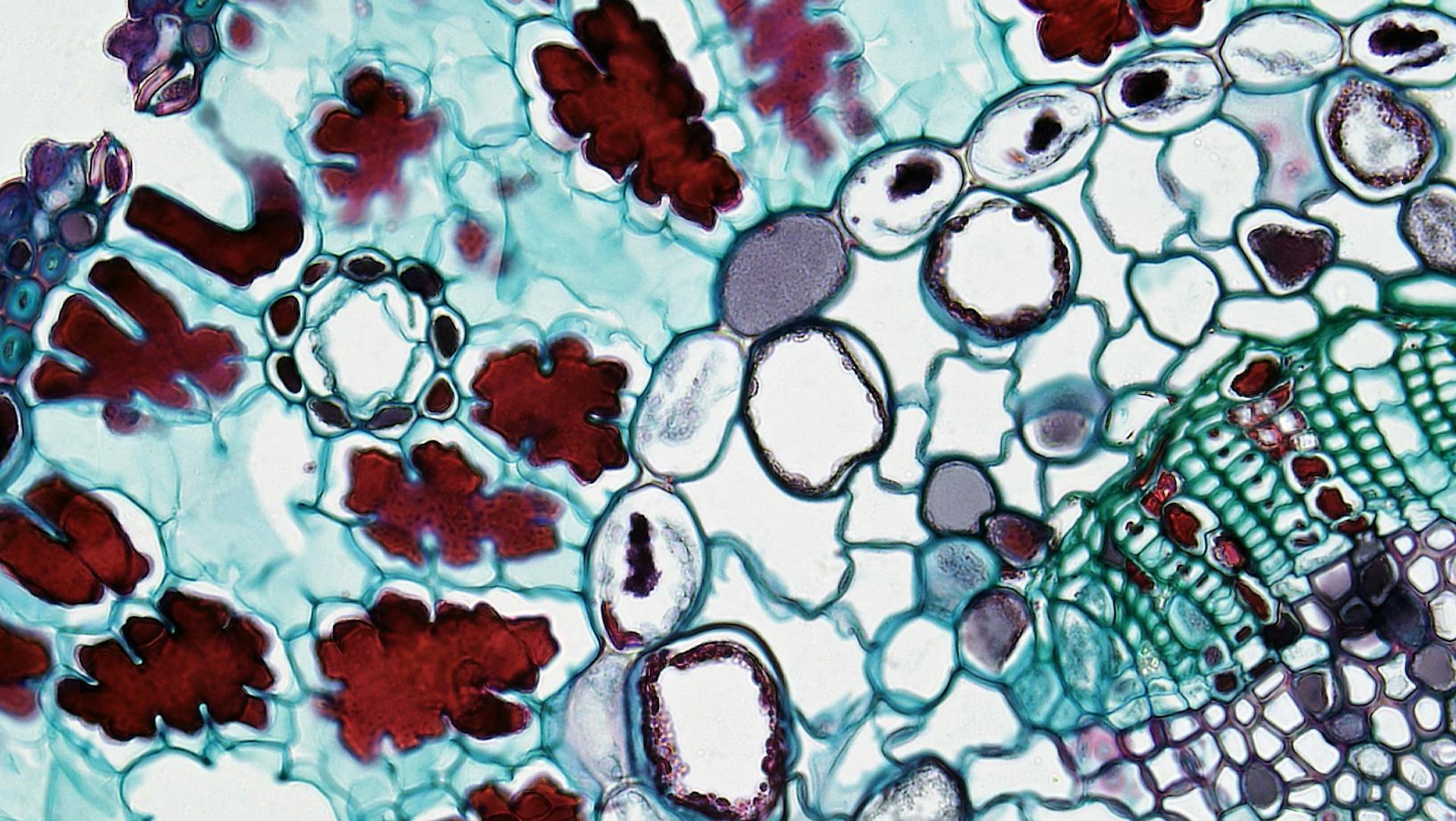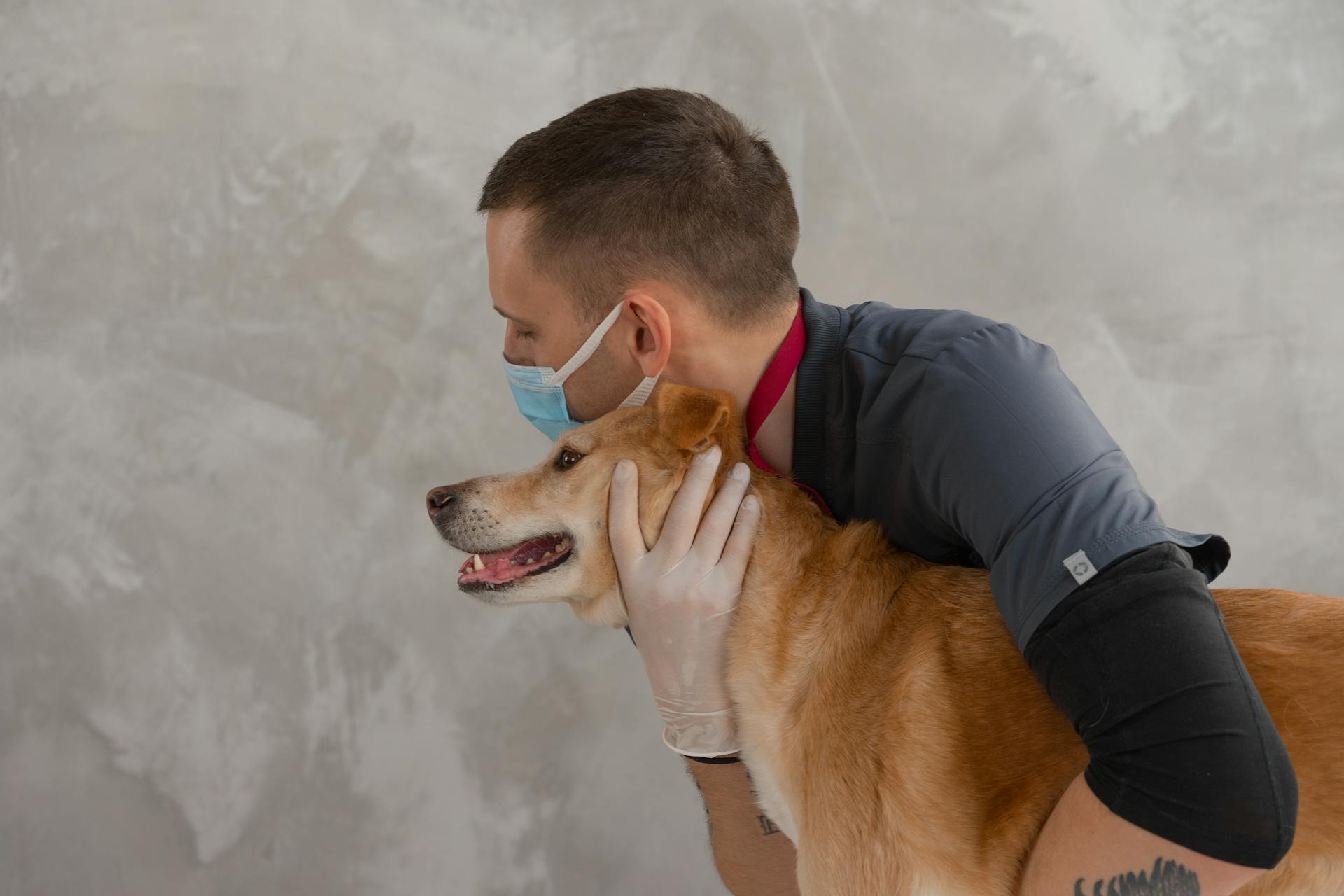
T cell lymphoma is a type of cancer that affects a dog's immune system, specifically the T cells. It's the most common type of lymphoma in dogs.
There are several subtypes of T cell lymphoma, including cutaneous lymphoma, which affects the skin, and gastrointestinal lymphoma, which affects the digestive tract. These subtypes can be further divided into different categories based on their location and severity.
The prognosis for T cell lymphoma in dogs depends on various factors, including the type and stage of the disease, as well as the dog's overall health. In general, the prognosis is considered poor for dogs with T cell lymphoma, with a median survival time of around 6-12 months.
Expand your knowledge: Lifespan of Dog with Mast Cell Tumor
Types and Symptoms
T cell lymphoma in dogs can manifest in the skin, causing flaky, scaly, reddened skin that's itchy and prone to infections. Lumps can appear in the skin or below the surface, ulcerating and causing discomfort.
Dogs with T cell lymphoma may also experience unexplained weight loss, decreased appetite, and increased drinking and urination. They might be lethargic, vomit, or have diarrhea.
Some common areas where you can check for small lumps that might be swollen lymph nodes include:
- Under the jawbone
- In the shoulders
- Under the front legs
- In the groin
- Behind the knee region
Keep an eye out for changes in your dog's breathing, such as an increased respiratory rate with more shallow breaths. A pot-bellied appearance can also be a sign of T cell lymphoma.
Lymphoblastic
Lymphoblastic lymphoma is a rare and aggressive type of lymphoma.
It's identified in about 10% of TCL cases and about 3% of all canine lymphoma.
This type of lymphoma is considered a solid variant of T cell acute LL and is generally classified as a neoplasm arising from precursor cells.
The outcome is generally poor without any statistical difference compared with CD4+ PTCL.
One study found a high prevalence of LL in the boxer breed, which had a less aggressive course and a longer survival.
The prevalent immunophenotype of LL is similar to that of PTCL, which is CD45+CD3+CD4+MHC II–.
Terminal deoxynucleotidyl transferase (TdT) is often used to confirm lymphoblastic nature in human LL, but it hasn't been optimized for dogs.
A significant difference between low- and high-grade lymphomas can be shown by determining proliferative activity through FC.
Cutaneous
Cutaneous lymphoma is a type of cancer that originates in the skin. Dogs with cutaneous lymphoma may have flaky, scaly, reddened skin. They can be very itchy due to this condition.
Lumps in the skin or below the skin surface can ulcerate and cause discomfort. Infections following on from these skin issues are also common.
The footpads, oral cavity, internal organs, and external lymph nodes may also be involved in cutaneous lymphoma.
Suggestion: Skin Photos of Canine Cutaneous Lymphoma
Signs of
As you learn more about the types and symptoms of lymphoma in dogs, it's essential to know what to look out for. One of the most common symptoms is unexplained weight loss, which can be a sign of many different issues, not just lymphoma.
Additional reading: Cancer Symptoms in Dogs Lymphoma

A decrease in appetite, increased drinking and urination, lethargy, and vomiting and/or diarrhea can all have multiple causes. Lymph nodes can swell for reasons other than lymphoma, such as from infections or tick disease.
Lymphoma in dogs can also result in an increased respiratory rate with more shallow breaths being taken. Some dogs with lymphoma may display a pot-bellied appearance.
Here are some areas to check for small lumps that might be swollen lymph nodes:
- Under the jawbone
- In the shoulders
- Under the front legs
- In the groin
- Behind the knee region
In some cases, lymphoma can present as reddened regions or ulcers, or appear as big, flaky white crusts. Lesions resembling hyperemic (very red) gingivitis or periodontal disease may also occur in the mouth.
Diagnosis
Diagnosis of T cell lymphoma in dogs typically involves a complete physical examination, including bloodwork and urinalysis, to determine the cause of the dog's symptoms. A veterinarian may also perform a fine needle aspiration or biopsy to collect a sample of affected tissue for further testing.
To confirm lymphoma, microscopic analysis of the tissue sample is necessary, which can be done in-house by a veterinarian or sent to a specialist for analysis. This analysis can determine whether the lymphoma originates from B-cell or T-cell lymphocytes, which is relevant for predicting prognosis.
The extent of the disease is determined through various tests, including imaging of the chest and abdomen, blood and urine analysis, and bone marrow sampling. Staging tests help determine the extent of the disease, making treatment recommendations possible and predicting outcomes.
Here is a summary of the stages of lymphoma in dogs:
- Stage I: Cancer is detected in a single lymph node.
- Stage II: Cancer is detected in multiple lymph nodes on the same side of the diaphragm.
- Stage III: Cancer is detected in multiple lymph nodes on both sides of the diaphragm.
- Stage IV: Cancer has spread to the liver and/or spleen.
- Stage V: Cancer has spread to the bone marrow (and the blood) or the central nervous system.
Mediastinal
Mediastinal lymphoma can cause breathing difficulty in dogs, as well as non-specific signs such as lethargy and vomiting.
The mediastinum is a lymph tissue containing space between the lungs in the chest cavity.
Dogs with mediastinal lymphoma may also experience increased thirst and urination, weight loss, or poor appetite.
In some cases, mediastinal involvement can occur with the multicentric form of the disease, meaning other lymphoid organs may also be affected.
Distinguishing Reactive vs Neoplastic
Differentiating between reactive and neoplastic T cell populations is a challenging task, especially when it comes to distinguishing paracortical hyperplasia from T-zone lymphoma (TZL). Paracortical hyperplasia is a transitory hyperplastic condition due to chronic dermatitis or specific antigens stimulating T response.
Paracortical hyperplasia generally represents the immune response first phase, preceding plasma cell proliferation. It's often difficult to differentiate via cytology, but flow cytometry (FC) can be a rapid and effective way to distinguish.
The phenotype of TZL is very peculiar, with a CD45-CD5+CD21+ profile that can be easily detected using a multicolor approach. This makes FC a reliable method for differentiating between reactive and neoplastic T cell populations.
High-grade T-cell lymphoma (TCL) and reactive lymph node hyperplasia can be easier to differentiate because hyperplastic lymph nodes are generally composed of a mixed population of T and B cells. A slight increase of large B cells is also common in hyperplastic lymph nodes.
The T cell population in hyperplastic lymph nodes is generally composed of a mixed population of both CD4 positive and CD8 positive cells, suggesting polyclonal expansion.
Take a look at this: Canine Small Cell Lymphoma
Diagnosing
Diagnosing lymphoma in dogs requires vigilance from owners, who can spot issues by regularly feeling around for lymph nodes during grooming. If you feel anything unusual, take your dog to see your local veterinarian right away.
A veterinarian will typically perform a complete physical examination, including bloodwork and urinalysis, to determine the cause of a dog's symptoms. They may also perform three-view chest X-rays and an abdominal ultrasound to check for tumors or cancer spread.
To determine the stage of lymphoma, the veterinarian will perform various tests, such as blood and urine analysis, imaging of the chest and abdomen, and bone marrow sampling. These tests will help determine the extent of the disease and make treatment recommendations.
Staging tests can include:
- Stage I: Cancer is detected in a single lymph node.
- Stage II: Cancer is detected in multiple lymph nodes on the same side of the diaphragm.
- Stage III: Cancer is detected in multiple lymph nodes on both sides of the diaphragm.
- Stage IV: Cancer has spread to the liver and/or spleen.
- Stage V: Cancer has spread to the bone marrow (and the blood) or the central nervous system.
Confirming lymphoma requires microscopic analysis of a sample of affected tissue, obtained either by fine needle aspiration or biopsy. Advanced molecular testing can also be performed to determine whether the lymphoma originates from B-cell or T-cell lymphocytes.
Treatment
Treatment for T cell lymphoma in dogs typically targets the entire lymphatic system or even the entire body, as it's a systemic cancer. This means that treatment options are often more extensive than surgery to remove a tumor from a specific location.
Chemotherapy is the recommended treatment for lymphoma in dogs, and it's the prevailing treatment option for T cell lymphoma as well. Fortunately, cancerous lymphoma cells are typically quite sensitive to chemotherapy drugs.
There are a number of different chemotherapy drugs and treatment plans that can be used for lymphoma, including multi-drug protocols that are considered the "gold standard" of therapy. These protocols generally result in longer remission times.
About 85% of dogs will go into remission with chemotherapy treatment, and most dogs tolerate chemotherapy well. However, about 15% of dogs will have side effects such as nausea, vomiting, diarrhea, and/or a reduced appetite.
These side effects usually begin within the first four days of treatment and can last for four days. Most dogs will not lose their fur, although breeds with fur that is more hair-like can.
After undergoing chemotherapy, dogs often do well for six to 12 months, depending on the type of lymphoma and the chemotherapy protocol used.
Understanding
T cell lymphoma in dogs is a type of cancer that affects the immune system, specifically the T cells. T cells are a type of white blood cell that plays a crucial role in fighting off infections and diseases.
It's estimated that T cell lymphoma accounts for about 85% of all lymphoma cases in dogs. This type of cancer can occur in any dog, but it's more common in middle-aged to older dogs.
The exact cause of T cell lymphoma is still unknown, but it's believed to be related to genetic mutations and environmental factors. Some breeds, such as the Doberman Pinscher, are more prone to developing this type of cancer.
Symptoms of T cell lymphoma can vary depending on the location and severity of the disease, but common signs include weight loss, lethargy, and loss of appetite.
Frequently Asked Questions
How long can a dog live with T-zone lymphoma?
Dogs with T-cell lymphoma typically live 6-9 months, with half living longer and half passing away sooner
Is T-cell lymphoma curable in dogs?
Unfortunately, T-cell lymphoma is rarely curable in dogs, with treatment often focused on managing symptoms and improving quality of life. However, with proper care and treatment, some dogs can experience long-term remission.
How aggressive is T-cell lymphoma?
T-cell lymphoma is an aggressive type of cancer that can progress quickly if not treated properly. With intensive treatment, however, many patients can achieve complete remission and potentially be cured.
What is the longest a dog has lived with lymphoma?
Dogs with lymphoma can live up to 12-14 months with treatment, but some may live longer with proper care and management. Average survival rates vary, but with treatment, many dogs can live a relatively long and healthy life.
Sources
- https://www.frontiersin.org/journals/veterinary-science/articles/10.3389/fvets.2021.600963/full
- https://www.vetspecialists.co.uk/fact-sheets-post/lymphoma-in-dogs-fact-sheet/
- https://avim.us/canine-lymphoma/
- https://petcureoncology.com/lymphoma-in-dogs/
- https://sashvets.com/diseases/lymphoma-cancer-dogs/
Featured Images: pexels.com


